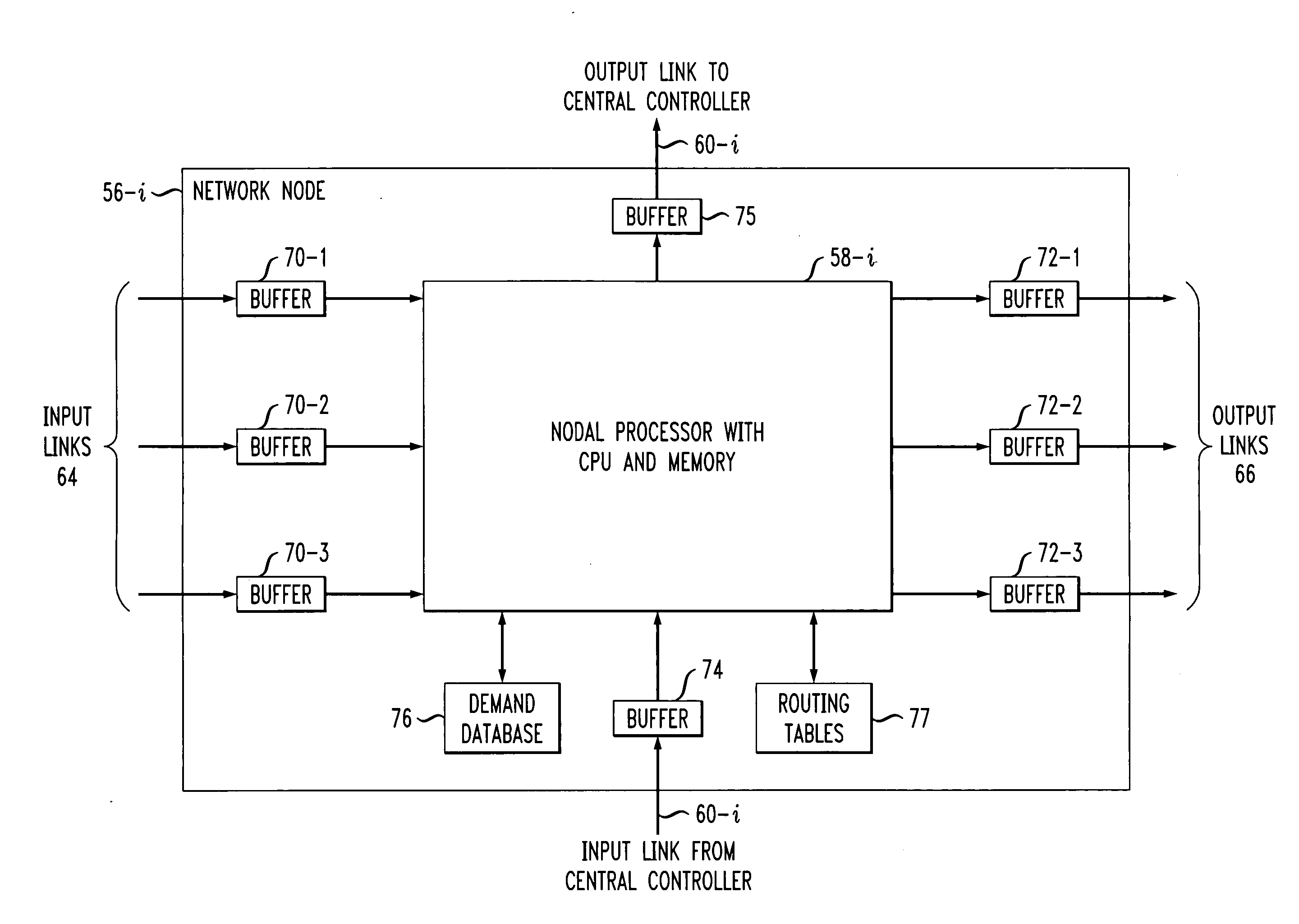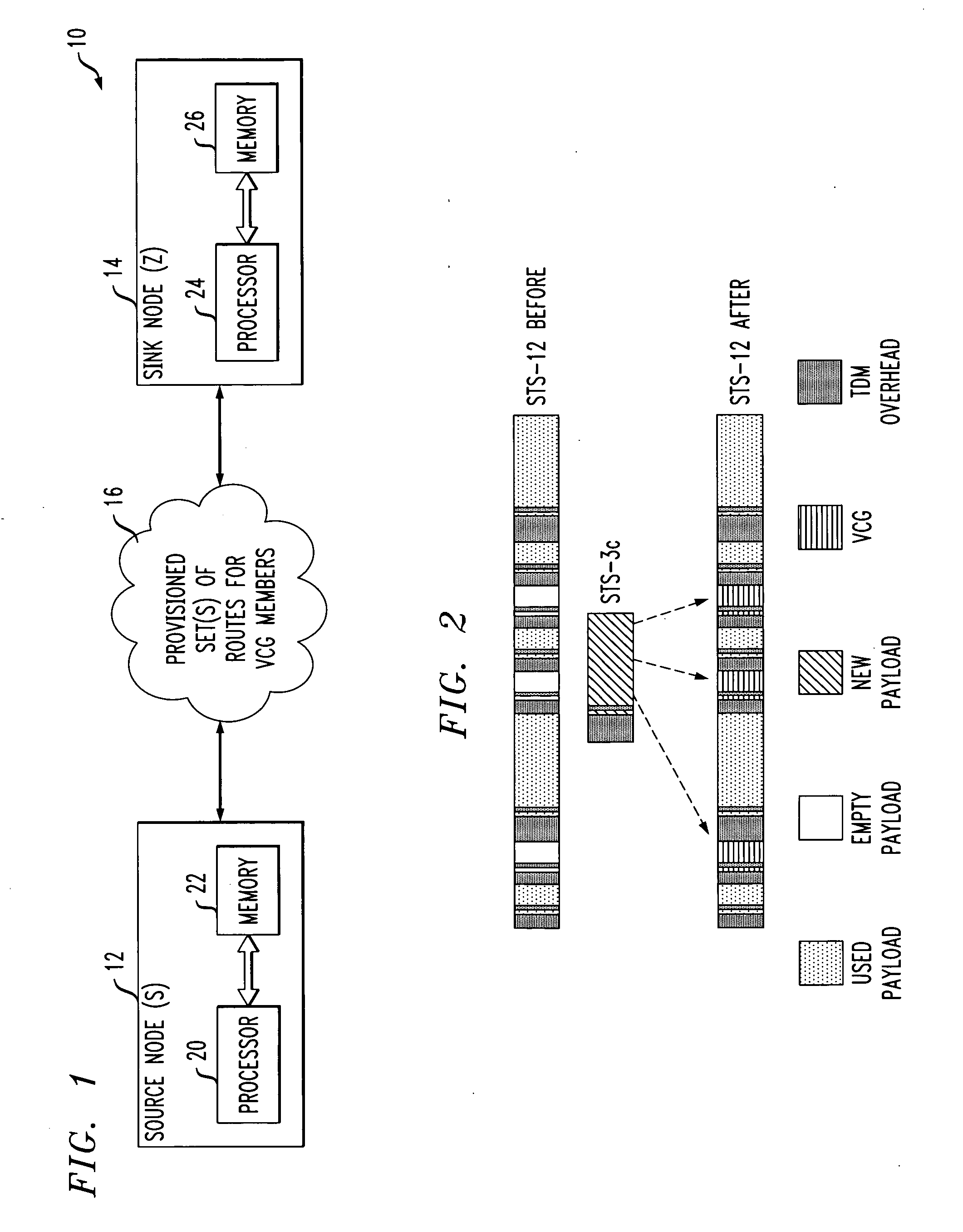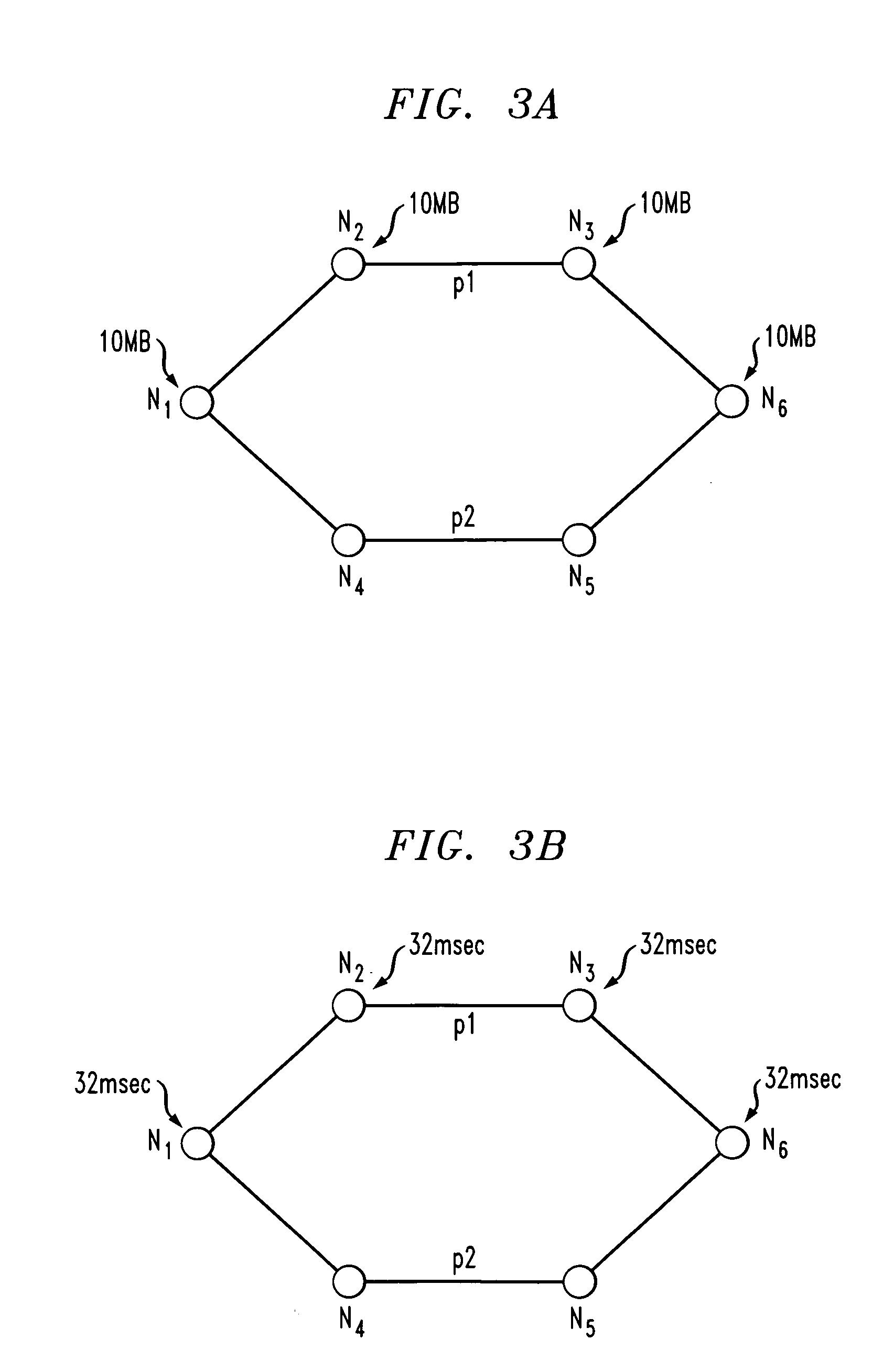Delay distributed virtually-concatenated data traffic
a technology of virtual concatenation and delay, applied in the field of data communication networks, can solve the problems of insufficient bandwidth efficiency and underutilization of fixed-bandwidth connections of conventional circuit-switched networks, and achieve the effects of reducing the buffer requirement at the destination node, supporting more traffic in the network, and reducing the buffer requirement on the nod
- Summary
- Abstract
- Description
- Claims
- Application Information
AI Technical Summary
Benefits of technology
Problems solved by technology
Method used
Image
Examples
Embodiment Construction
[0026] The invention will be illustrated herein in conjunction with illustrative embodiments of routing and design algorithms, as well as a network-based system and example network nodes in which the algorithms may be implemented. It should be understood, however, that the invention is not limited to use with the particular routing or design algorithms, network-based system or network node implementations described, but is instead more generally applicable to any routing or design application, network-based system or node implementation in which it is desirable to distribute delay associated with virtually-concatenated data traffic over intermediate nodes of the network rather than just at a destination node.
[0027] As used herein, an “intermediate node” generally refers to a node in a path other than the destination node. This may include the source node and nodes between the source node and the destination node. However, it is to be understood that any given node may function as o...
PUM
 Login to View More
Login to View More Abstract
Description
Claims
Application Information
 Login to View More
Login to View More - R&D
- Intellectual Property
- Life Sciences
- Materials
- Tech Scout
- Unparalleled Data Quality
- Higher Quality Content
- 60% Fewer Hallucinations
Browse by: Latest US Patents, China's latest patents, Technical Efficacy Thesaurus, Application Domain, Technology Topic, Popular Technical Reports.
© 2025 PatSnap. All rights reserved.Legal|Privacy policy|Modern Slavery Act Transparency Statement|Sitemap|About US| Contact US: help@patsnap.com



